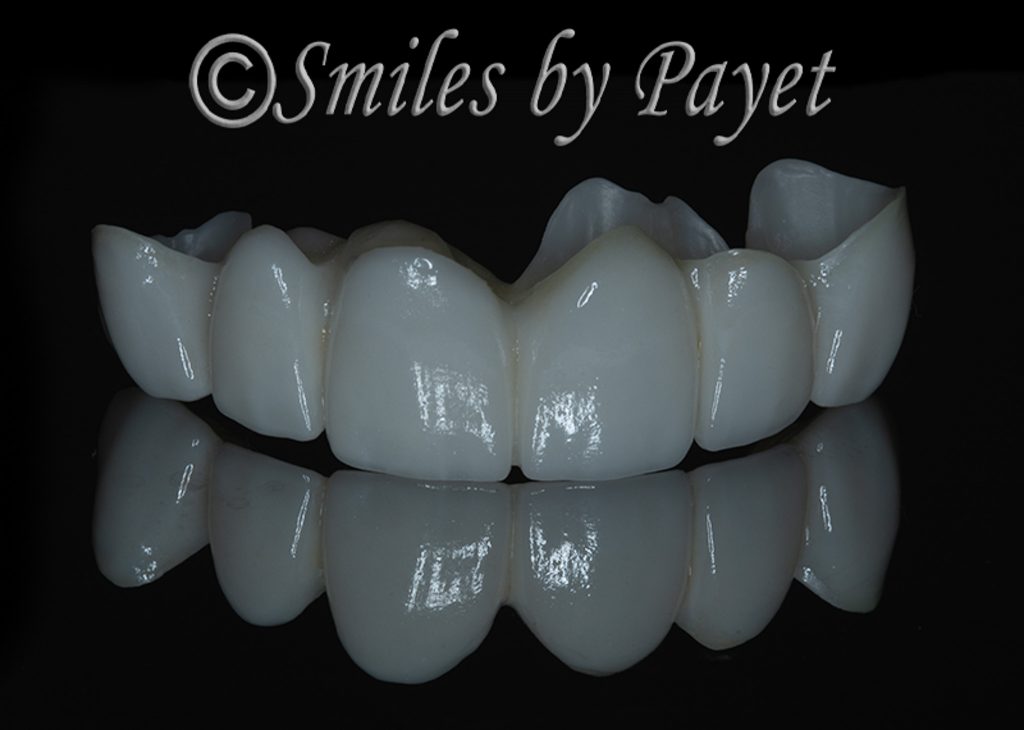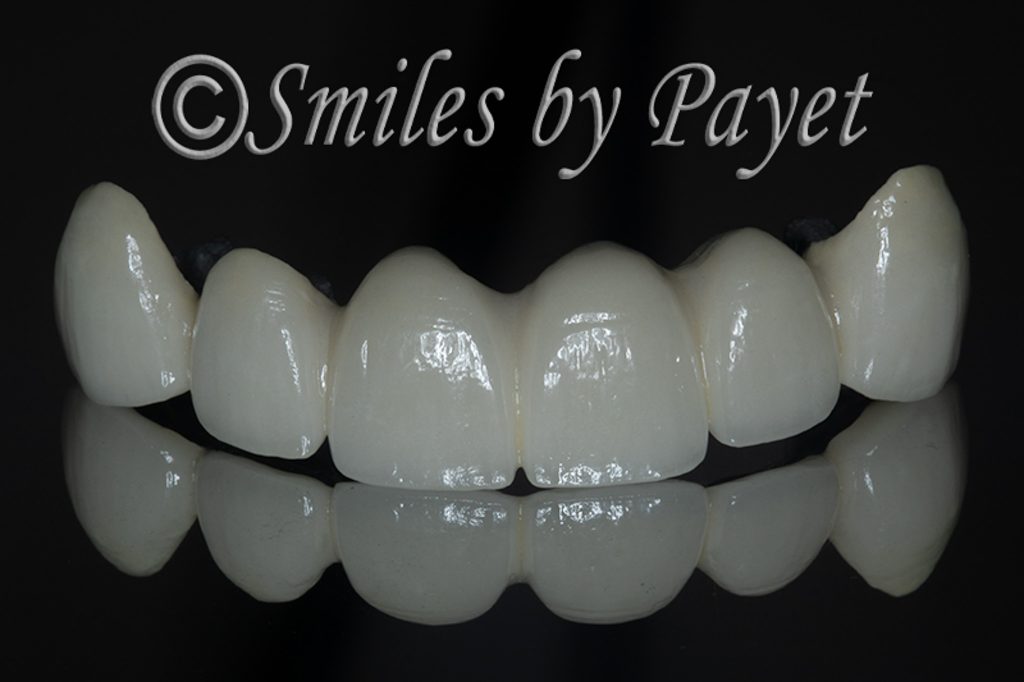Bridges
Dental Bridges
Dental Bridges and their advantages

Zirconia metal-free bridge
Dental bridges are used to replace missing teeth and are often an option when a patient has strong teeth in front of and behind the empty space (or spaces). One advantage of a dental bridge is that you can use it to easily replace missing teeth faster than with a dental implant. With proper home care, it can last for many, many years. Dental bridges are strong, esthetic, and can be made from a number of materials including highly-esthetic ceramics. You can view pictures of real dental bridges on real patients in our gallery.
Disadvantages of dental bridges

A PFM bridge
The disadvantages of a dental bridge have to do with the fact that in order to fabricate a dental bridge, you need to crown the teeth in front of the space and behind the space; and depending upon the width of the space, you may need to crown more than one of the adjacent (abutment) teeth. If the adjacent teeth already have crowns or large fillings, it’s less of a concern to fabricate a bridge versus when the adjacent teeth have never had a filling or other restoration, as you want to avoid cutting perfectly healthy teeth.
Other options for replacing missing teeth
While there is nothing wrong with drilling teeth for crowns for a bridge, there are other replacement options including dental implants and removable partials. The most common and often best choice for replacing missing teeth is to restore the tooth or teeth with dental implants. And if you are someone who has missing teeth and you are not a candidate for dental implants, and you don’t have teeth that are strong enough to hold on a bridge, a removable prosthesis is a good option because it can be used to restore your smile and your ability to chew.






